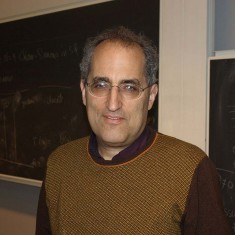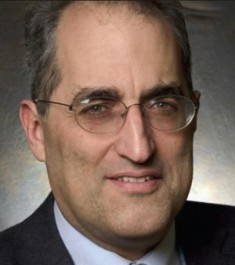| Edward Witten | |
|---|---|
 |
|
| Mathematician | |
| Specialty | String theory, quantum gravity, supersymmeetric quantum field theories |
| Born | Aug. 26, 1951 (age 62) Baltimore, Maryland, U.S. |
| Nationality | American |
Edward Witten is a very popular American theoretical physicist and a professor of mathematical physics in Princeton, New Jersey. Edward is also a researcher in quantum gravity, string theory, and other areas of mathematical physics. Apart from his great contribution in physics, Witten’s work has also contributed to pure mathematics.
In 1990, he was awarded a Fields Medal by the International Mathematical Union. This made him the first and the only physicist so far to get this award. In 2000, Time Magazine wrote that Edward is widely considered the world’s greatest living theoretical physicist.
Early Life and Education
Edward was born in Baltimore on August 26, 1951. His father is Louis Witten and his mother is Lorraine Witten. His dad is best known as a theoretical physicist who specializes in general relativity and gravitation relativity. Edward Witten attended his first school in Baltimore. He later joined Brandeis University where he received his Bachelor of Arts in 1971. He majored in history and minored in linguistics.
While in school, he published articles in The Nation and The New Republic. In 1968, an article that he published in The Nation argued that the New Left had no strategy. After a while, he joined the University of Wisconsin-Madison, but dropped out after one semester.
In 1973, he went back to academia where he enrolled at Princeton University to study applied mathematics. He later shifted departments and received his Ph.D. in physics in 1976. At Princeton, he worked under David Gross, the popular 2004 Nobel laureate in physics. Between the years 1976 and 1977, he also held a fellowship at Harvard University.
Witten’s Research and Contributions
Edward Witten applied techniques from quantum theory to a mathematical subject of low-dimensional topology. Basically, Edward noticed that a physical theory, named the Chern-Simons theory, could give a framework for comprehending the mathematical theory of 3-manifolds and knots.
Although his work was based on the notion of a Feynman path integral, therefore making it not mathematically rigorous, most mathematicians were able to develop his ideas. This led to the theory of Reshetikhin Turaev invariants.
Work with String Theory
 In 1984, together with another physicist, he wrote a paper. The paper was about the anomalies which occur during a radioactive decay, which could only be studied in terms of topology and in only 10 dimensions. This cemented some previous findings that said string theory required 10 dimensions. Later on, this theory became the superstring theory.
In 1984, together with another physicist, he wrote a paper. The paper was about the anomalies which occur during a radioactive decay, which could only be studied in terms of topology and in only 10 dimensions. This cemented some previous findings that said string theory required 10 dimensions. Later on, this theory became the superstring theory.
Edward’s paper energized the mathematics and physics community and soon five different ideas were competing as string theory. Edward Witten even wrote 19 papers in just one year, making him the chief proponent of the theory. Since string theory had five different ideas, it reached a stalemate. However, Edward continued to work to find which idea actually defined the string theory. His research discovered that all the ideas were actually aspects of the string theory. He combined all the ideas to M-string theory.
Witten and the M-Theory
In 1995, Edward published his findings on the theory. Basically the M-theory brought together five different ideas into a workable equation. He also added one more dimension and even suggested that the strings were branes, or membranes. The branes could actually exist in at least three dimensions and could grow all the way to the size of the universe. Edward Witten theorized that the universe could be sitting on a brane.
Witten’s Other Works
Edward continued to develop new theories, such as the twistor theory, which was created in 1965. In this theory, he was able to come up with new discoveries that led him to conclude that all the extra dimensions in string theory and M-theory were no longer necessary.
Edward has also made other contributions in physics such as in gauge/gravity duality. Together with another scientist, Nathan Seiberg, he established several influential results. In a well-known paper, the two studied the aspects of super-symmetric gauge theory. This paper combined Edward’s earlier work on topology quantum field- theory and led to the development of topology of smooth 4-manifolds.
Edward’s main focus was on using calculations versus running experiments. This meant he relied too much on mathematics rather than physics. He is also a recipient of many honors and awards, including the National Medal of Science in 2002, the Pythagoras Award in 2005, and the Fundamental Physics Prize in 2012.